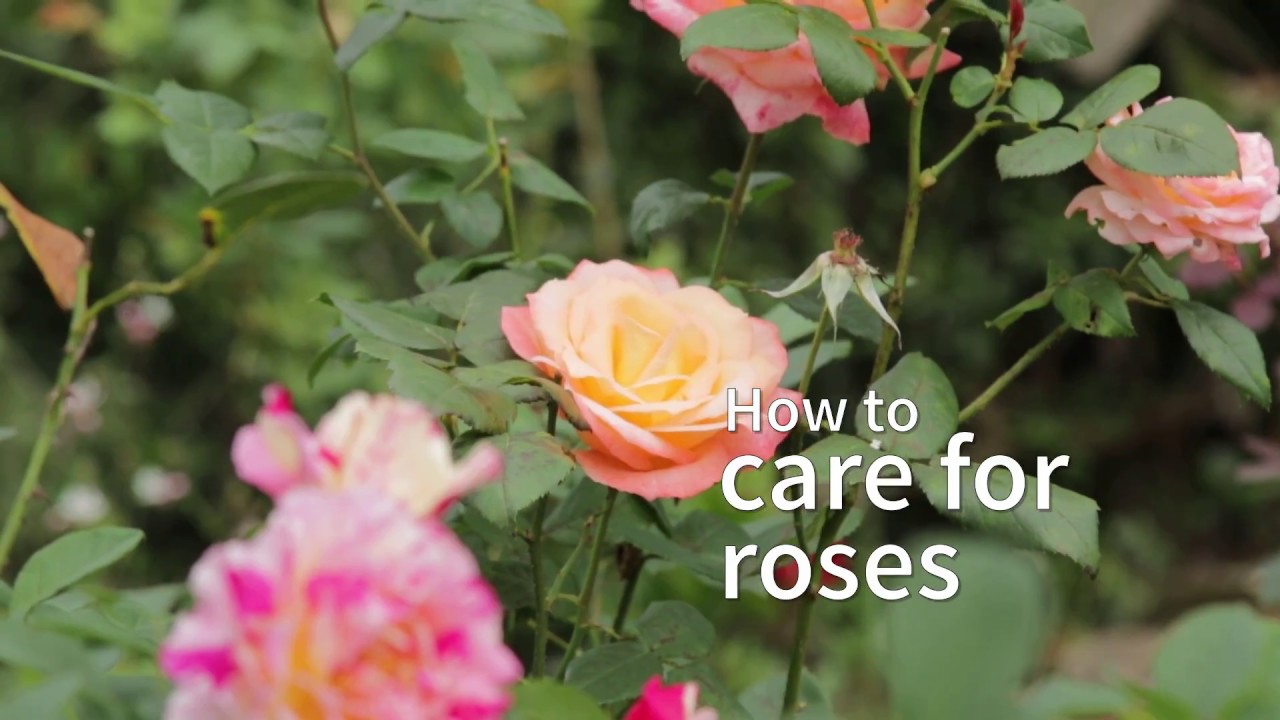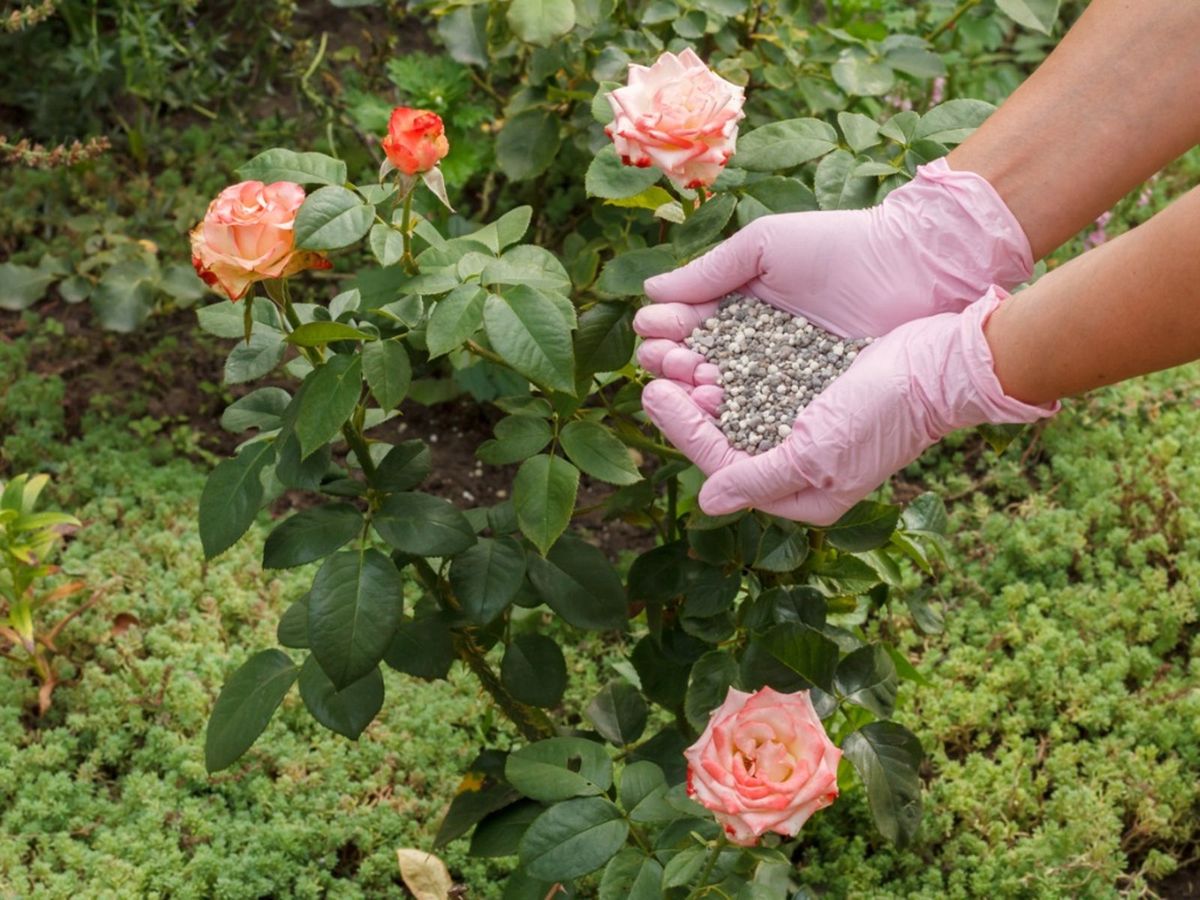How To Take Care Of Roses - 2024 Step-by-Step Guide
Roses can be tricky to maintain, but with the right care, they thrive. Learn how to take care of roses with these expert tips for beginners and pros alike.
Sep 18, 20244.7K Shares191.3K Views

Roses have captivated gardeners for centuries with their vibrant colors, delicate petals, and intoxicating fragrances. They are more than just flowers; they’re a symbol of love, beauty, and passion, often taking center stage in gardens and bouquets alike.
But despite their charm, many gardeners feel daunted by the idea of growing and caring for roses, believing them to be fussy or difficult to maintain.
The truth is, with the right knowledge and a few essential tips, growing healthy and blooming roses can be straightforward and rewarding.
From selecting the perfect rose variety to mastering the basics of planting, watering, and pruning, this guide will walk you through everything you need to know to transform your rose garden into a thriving masterpiece.
Understanding The Different Types Of Roses
There are countless rose varieties, each coming in various shapes, sizes, and colors, each with unique characteristics and care requirements. Before choosing a rose for your garden, it's essential to understand the different types available:
- Old Roses: Introduced before 1867, these are the classic, fragrant roses often seen in historical art. Popular examples include the 'Madame Hardy'or 'Duchess of Portland', known for their lush appearance and deep fragrance. They can be challenging to grow in colder climates but thrive in warmer areas.
- Modern Hybrid Roses: Developed after 1867, these roses are bred for long-lasting blooms, disease resistance, and diverse colors. Among the most popular are Hybrid Tea Roses, which feature a single large flower on a long cutting stem, perfect for bouquets.
- Species (Wild) Roses: These ancient roses have been growing naturally for thousands of years and tend to have single blossoms. They are hardy and often used in modern hybridization due to their strong, disease-resistant traits.
Best Tip: For beginners, opt for disease-resistant varieties like Knock Out Roses, which are low-maintenance, bloom continuously, and resist common rose diseases.
Choosing The Right Location For Your Roses
Roses thrive in areas where they receive at least 5-6 hours of sunlight per day, with morning sunlight being especially important. Morning sun dries the dew on leaves, reducing the risk of fungal infections such as powdery mildew.
- Northern Climates: Consider planting roses near a south-facing wallto protect them from cold winds and provide extra warmth.
- Southern Climates: In hotter regions, afternoon shade can prevent the blooms from scorching, extending the life of your roses.
Roses prefer well-drained, loamy soilwith a slightly acidic pH of 5.5 to 7.0. Avoid areas with poor drainage, as waterlogged soil can cause root rot. If your soil is heavy clay, amend it with compostor organic matter to improve drainage.
Pro Tip: In small or urban gardens, consider climbing rosesthat can be trained along fences or walls to maximize space while still receiving full sun.
Planting Roses: The Right Time And Method
The best time to plant rosesdepends on your climate. For bare-root roses, plant in early spring while they are still dormant. If you're in a warmer region, you can also plant them in late fall.
Potted roses, on the other hand, can be planted at any time during the growing season, though late spring is ideal.
Step-by-Step Planting Guide:
- Soak the roots: For bare-root roses, soak the roots in water for 8-12 hoursbefore planting to rehydrate them.
- Dig a large hole: Dig a hole at least 15-18 inches wideto allow the roots to spread out comfortably.
- Position the crown: In colder climates, bury the crown 2-3 inches below ground levelfor winter protection. In milder climates, plant it at ground level.
- Backfill and water: After placing the rose in the hole, backfill with soil and water thoroughly. Mound loose soil around the canes to protect the plant while it acclimates.
Common Mistake to Avoid: Overcrowding! Ensure at least 2-3 feet of spacebetween roses to allow for good air circulation and prevent fungal diseases.
Watering Roses: Key Tips For Success
Watering is crucial for rose health, but it’s easy to get wrong. Deep wateringis more effective than frequent shallow watering, as it encourages deeper root growth and prevents weak, surface-level roots.
Best Watering Practices:
- Frequency: Water deeply about 1-2 times a weekduring the growing season. Adjust based on your climate: in hot, dry weather, water more frequently, but avoid overwatering.
- Water the base: Always water at the base of the plant using a soaker hose or watering wand to prevent water from hitting the leaves, which can encourage fungal diseases.
- Mulch: Apply a 2-4 inch layer of mulcharound the base to retain moisture and reduce evaporation. Make sure to leave a 1-inch gap between the mulch and the plant stem to prevent rot.
Pro Tip: Check the soil moisture by sticking your finger about 2 inches deep into the soil. If it feels dry, it’s time to water.
Feeding And Fertilizing Roses
Roses are heavy feeders and require regular fertilization for continuous blooming. Organic fertilizers provide a steady release of nutrients and are less likely to burn the plant.
When choosing fertilizers for roses, opt for a balanced blend of nitrogen, phosphorus, and potassium to promote healthy growth, vibrant blooms, and strong root development.
Fertilizing Schedule:
- Spring: Start with a balanced granular fertilizer such as 5-10-5 or 5-10-10in early spring after pruning.
- Mid-Season Boost: In May and June, add Epsom salts(1 tablespoon per plant) to encourage basal breaks and more vibrant blooms.
- Organic Options: Use compost, fish emulsion, or alfalfa meal for a steady release of nutrients. If using alfalfa meal, mix ½ cup of alfalfa pelletsinto the soil around the base and water well.
Extra Tip: Bananas are great for roses! Place banana peelsaround the base of the plant to provide potassium, calcium, and magnesium.
Pruning Roses: Tips For Healthy Growth
Pruning is essential for maintaining healthy roses and encouraging new blooms. It also improves air circulation, reducing the risk of diseases.
Pruning Steps:
- Early Spring Pruning: For modern hybrid roses like floribundasand hybrid teas, prune in early spring. Cut back by about one-thirdand remove any dead or diseased wood.
- Deadheading: To keep your roses blooming throughout the season, remove spent blooms by cutting back to the first five-leaflet stem. Regular deadheading redirects the plant’s energy into producing more flowers.
- Old-Fashioned and Climbing Roses: Prune heirloom and climbing roses in late summer, after they’ve finished blooming. These roses bloom on wood from the previous year, so pruning too early will reduce flowering.
Common Mistake: Pruning too late in the season can damage the plant and result in fewer blooms. Always prune before the buds begin to swell.
Preventing Pests And Diseases In Roses
Preventing pests and diseases starts with proper care and garden maintenance. Regular monitoring and early action are key to keeping your roses healthy.
Common Pests:
- Aphids: These small insects feed on sap, causing leaves to curl and weaken. Spray aphids off with water or use insecticidal soap.
- Japanese Beetles: Handpick beetles early in the morning and drop them in soapy water. Neem oilcan also be used as a deterrent.
Common Diseases:
- Black Spot: A common fungal disease causing dark spots on leaves. Prevent black spot by watering at the base of the plant and removing any infected leaves. An organic fungicide can be used if needed.
- Powdery Mildew: This white powder appears on leaves and stems, often during humid weather. Ensure good air circulation and prune regularly to prevent mildew.
Natural Tip: Companion plants like garlic, lavender, and marigoldshelp deter pests naturally and improve garden biodiversity.
Winterizing Roses: Protecting Your Roses For The Cold Season
In colder climates, protecting your roses from harsh winter conditions is crucial for their survival. Follow these steps to winterize your roses:
- Prune Tall Canes: Before winter, cut back tall canes to about 30 inchesto reduce wind damage.
- Mulch: After the first frost, apply 6 inches of mulcharound the base of the plant to insulate the roots.
- Stop Fertilizing: Cease fertilizing about 6 weeks before the first frostto help the plant enter dormancy.
Container Roses: If you're growing roses in containers, move them to a dark, unheated space(like a garage or basement) after the first freeze. Water sparingly during the winter and return the plant outdoors when the weather warms up.
Companion Planting For Roses: Enhance Growth And Deter Pests
Companion planting can improve rose health, deter pests, and add beauty to your garden. Choose plants that complement your roses visually and provide practical benefits.
Best Companion Plants For Roses:
- Lavender: Attracts pollinators and beneficial insects while repelling pests like aphids and beetles.
- Catmint (Nepeta): Its purple-blue flowers provide contrast to pink or red roses and help repel pests.
- Marigolds: Known for repelling beetles, marigolds are an excellent companion plant that adds vibrant color.
Design Tip: In a small garden, combine lavenderor catmintwith your roses to create a layered look while naturally repelling pests.
FAQs About Rose Care
How Often Should I Water My Roses?
Roses need about 1-2 inches of water per weekduring the growing season. Water deeply at the base and avoid wetting the leaves to prevent fungal diseases like black spot.
What Is The Best Fertilizer For Roses?
A balanced granular fertilizer such as 5-10-5 or 5-10-10works well. Organic options like compost, manure, and alfalfa meal are excellent for providing a slow, steady release of nutrients.
How Do I Prevent Black Spot On My Roses?
Prevent black spot by watering at the base, pruning for air circulation, and cleaning up fallen leaves. Use an organic fungicide if needed.
When Is The Best Time To Prune Roses?
The best time to prune hybrid roses is in early spring before new growth begins. For old-fashioned and climbing roses, prune after blooming in late summer.
Conclusion
Caring for roses doesn’t have to be intimidating. By selecting the right varieties, planting them in optimal conditions, and following a consistent care routine, you’ll enjoy vibrant, healthy roses that bloom beautifully year after year.
From watering and fertilizing to pruning and protecting against pests, each step plays a crucial role in the success of your rose garden.
Embrace the joy of growing these timeless flowers, and let your garden become a source of beauty and inspiration for years to come.
Jump to
Understanding The Different Types Of Roses
Choosing The Right Location For Your Roses
Planting Roses: The Right Time And Method
Watering Roses: Key Tips For Success
Feeding And Fertilizing Roses
Pruning Roses: Tips For Healthy Growth
Preventing Pests And Diseases In Roses
Winterizing Roses: Protecting Your Roses For The Cold Season
Companion Planting For Roses: Enhance Growth And Deter Pests
FAQs About Rose Care
Conclusion
Latest Articles
Popular Articles


